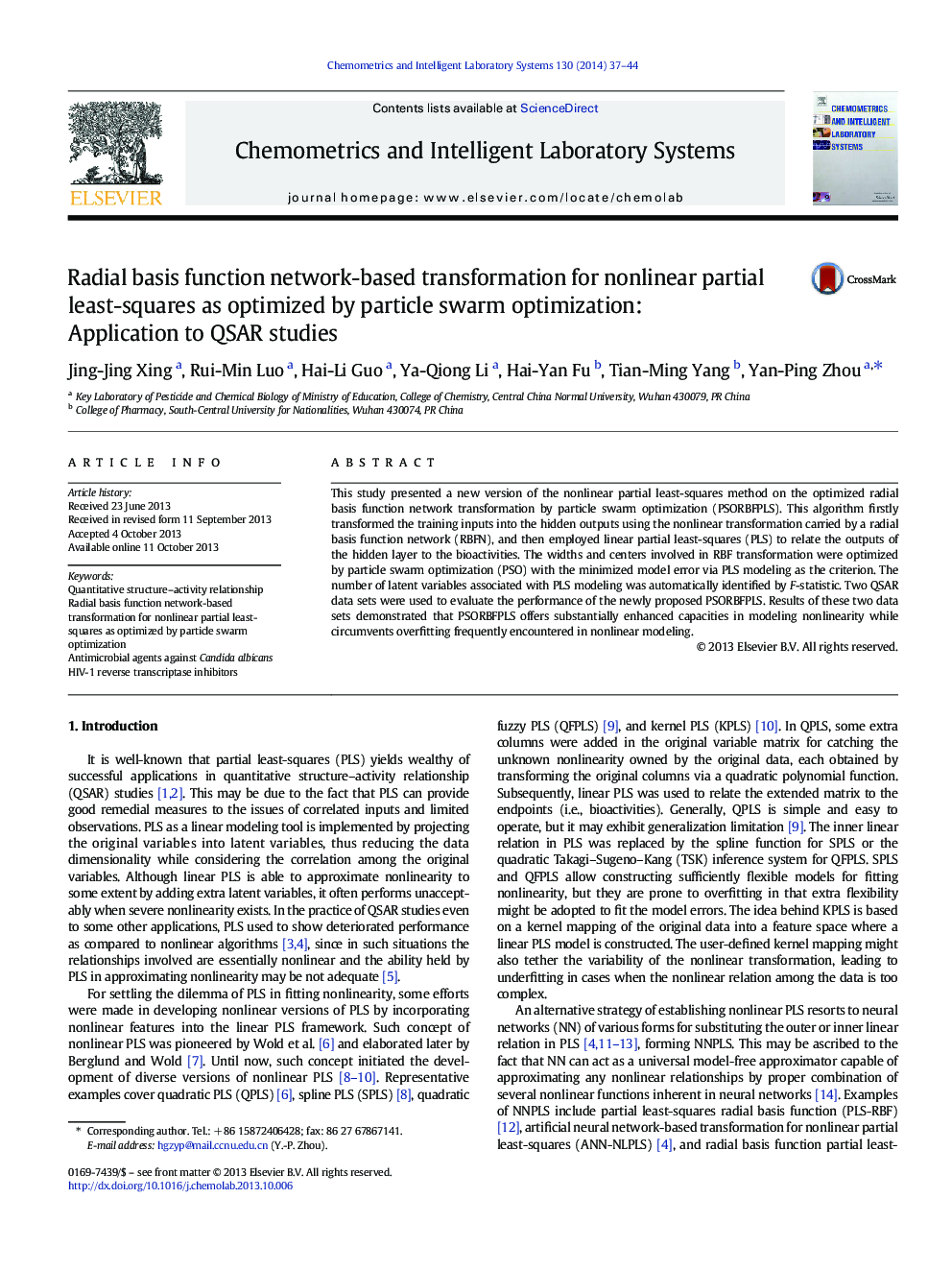| Article ID | Journal | Published Year | Pages | File Type |
|---|---|---|---|---|
| 1180665 | Chemometrics and Intelligent Laboratory Systems | 2014 | 8 Pages |
•PSORBFPLS was proposed on linear PLS and the optimized RBFN transformation by PSO.•Two QSAR data sets were used to evaluate the performance of PSORBFPLS.•PSORBFPLS offers substantially enhanced capacities in modeling nonlinearity.•PSORBFPLS can circumvent overfitting frequently encountered in nonlinear modeling.•By PSORBFPLS, the RMSEs for two test sets are 0.2574 and 0.7583, respectively.
This study presented a new version of the nonlinear partial least-squares method on the optimized radial basis function network transformation by particle swarm optimization (PSORBFPLS). This algorithm firstly transformed the training inputs into the hidden outputs using the nonlinear transformation carried by a radial basis function network (RBFN), and then employed linear partial least-squares (PLS) to relate the outputs of the hidden layer to the bioactivities. The widths and centers involved in RBF transformation were optimized by particle swarm optimization (PSO) with the minimized model error via PLS modeling as the criterion. The number of latent variables associated with PLS modeling was automatically identified by F-statistic. Two QSAR data sets were used to evaluate the performance of the newly proposed PSORBFPLS. Results of these two data sets demonstrated that PSORBFPLS offers substantially enhanced capacities in modeling nonlinearity while circumvents overfitting frequently encountered in nonlinear modeling.
